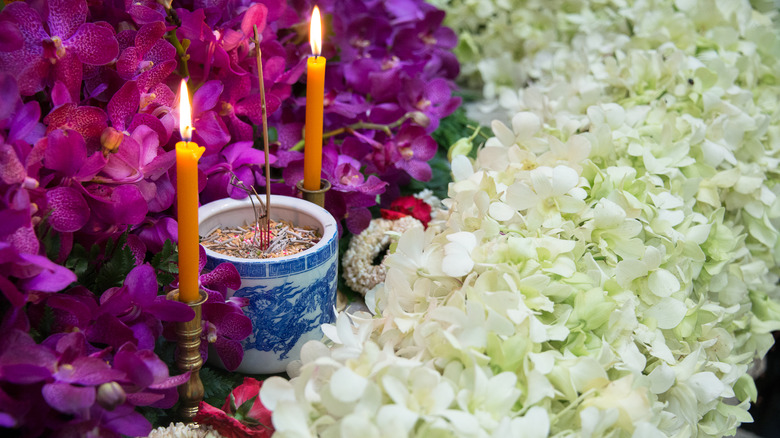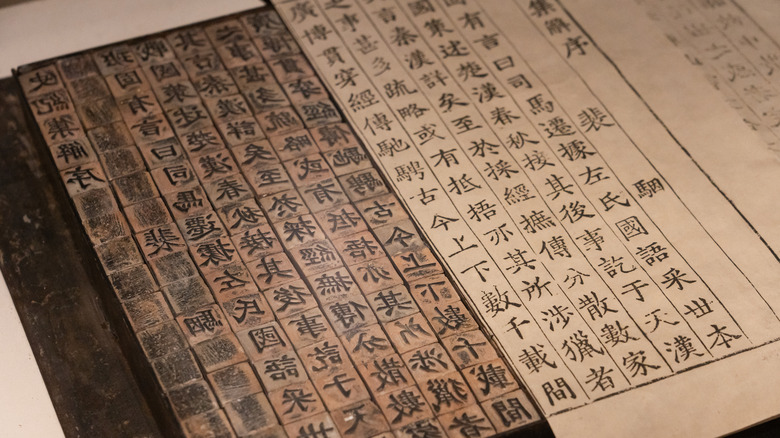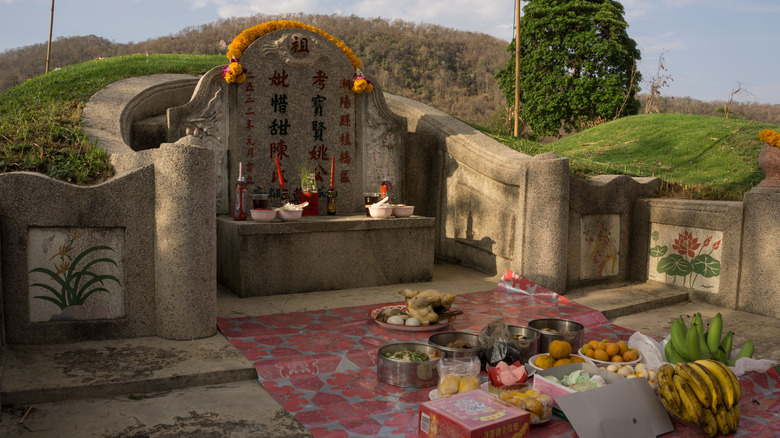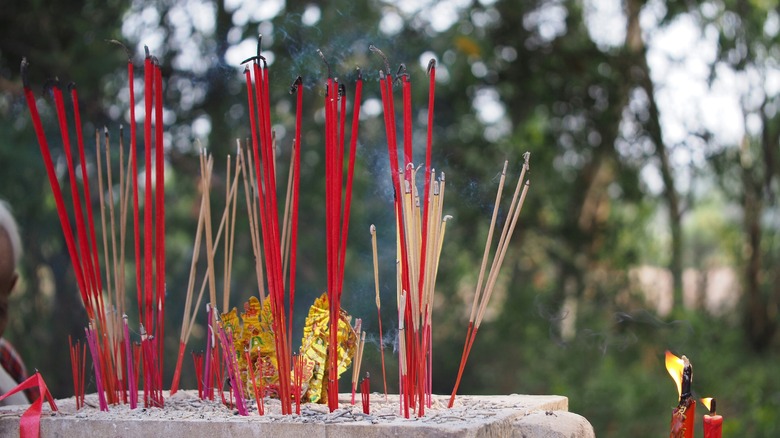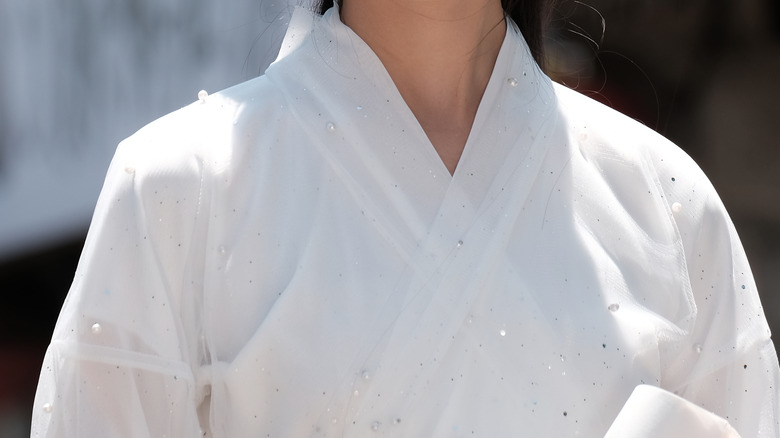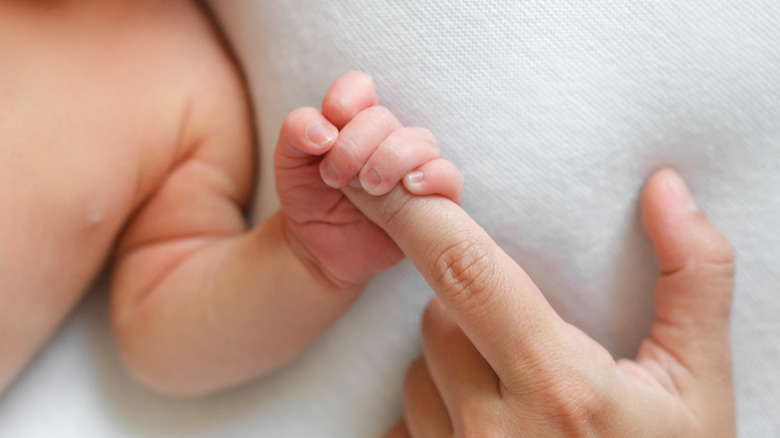Inside Ancient China's Mourning Rituals For The Early Death Of Children
Out of all the horrors to suffer in life, the death of a child stands out as particularly cruel. It's not just the severance of one human generation to the next, but an obliteration of the dreams, hopes, and shared love of the child's parents. And yet, before the 20th century, there were minimal guarantees that a baby would live to adulthood. As Our World in Data illustrates, 26.9% of all people worldwide died during infancy for most of human history. When looking at those who died during childhood, before 15 years old, the number jumps to 46.2%.
Starting around 1900, infant mortality plummeted dramatically. Even only within the past 30 years, the number of infant deaths per 1,000 births has dropped from 65 down to 27, as the World Bank illustrates. That's a remarkable figure that attests to the power of modern medical practices, sanitation, and disease prevention.
This is why many ancient cultures encouraged parents to not get too attached to their offspring, as Children and Youth in History says. This might sound heartless, but was there a better way? Rituals provide another coping method to those who grieve, whether something as simple as a flower on the grave, or something as complex as Egyptian mummification. Even our human cousins, Homo neanderthalensis, buried their dead, as sites like the CBC describe. And in ancient China, a rigorously formal culture built on strict social rank and sanctioned public behavior, rituals for the dead became immensely complex and exacting.
Ancient traditions put to writing
When we talk about "ancient China," it's important to remember that we're not talking about one, static, unchanging block of centuries-long civilization. This is true regardless of the region of the world, like ancient Greece, Rome, Egypt, and the like. We have evidence for the first possible Chinese dynasty, the Xia dynasty, going back all the way to 2100 BCE, as the Metropolitan Museum of Art illustrates. From there, we've got the Shang dynasty, Zhou, the Warring States Period, Qin, and Han dynasties leading all the way to 220 CE. That entire, 2,300-year-span of history was full of periods of regional peace and strife, land and power grabs, massive social and cultural shifts, you name it. Traditions, especially those regarding something massively important like death, would have evolved and differed quite a bit over the entire time.
Records about customs related to the deaths of children date back to the Zhou dynasty (from 1050 to 256 BCE) and focus on social etiquette, as China Knowledge describes. We're talking Confucian-inspired codes of conduct, not legal strictures, especially as related to the nobility. These were compiled and committed to text in the book "Yili," or "Etiquette and Rites," sometime before the Han dynasty (from 206 BCE to 220 CE). From that point, "Yili" became the standard reference point for discussing death-related customs. By the late Han era, politician and writer Zheng Xuan (137 to 200 CE) wrote a set of commentaries about the text, as Stanford University explains.
Highly prescriptive social rituals
Because "Yili" is a very old text, certain sections of it haven't survived, no matter how important it was or how many times it was copied. As China Knowledge explains, parts were added, removed, altered, and re-arranged to produce our current, "final" version from the Jin period (265 to 420 CE). Only then was the book formally named "Yili." All these caveats are to say: Our insight into the death rituals of ancient China is limited, derives from a particular window of time (the Zhou period), is written from the perspective of wealthy nobles, and is not at all applicable to all people of all classes from every region of continental China for hundreds of years. But, it's still the main source of information we have.
"Yili" covers a wide variety of topics besides death and mourning. Even the titles of chapters demonstrate a meticulous, obsessive focus on rank and formality. They're also very obviously written for non-peasants. Chapter titles include "Visit of one ordinary officer to another," "Interstate missions," "The smaller set of beasts offered as food to the ancestor," and more. Discussions are highly prescriptive, like, "Then throwing them over his left shoulder, he takes the collar and the girdle together [in his left hand]. He [then] ascends by a ladder set against the front end of the east wall, and, going up to the center of the house, faces north, and uses the clothes to invite the spirit to return to them."
Different rites for different ages
Even amid the detailed, ritualistic behavior described in "Yili," the death rituals for children may surprise readers the most. For instance, as Children and Youth in History describes, mourning rites differed depending on the age of the child who died. The idea was, as China Knowledge explains, to create a frame of time for a mourner to transition back to normal, everyday life. Of course we can't account for what parents and loved ones felt, but only the outward, socially acceptable display of mourning to one's community and associates.
If a child died from the ages of 8 to 11, the death was considered a "minor premature." Deaths from ages 12 to 15 were "middle premature," while 16 to 19 was "older premature." Each age bracket involved a successively longer period of ritualistic mourning, from 7 to 9 months, and also different levels of funereal clothing. Children under 8, even down to mere months old, had no official period of mourning, and those who grieved didn't wear funereal clothing. That being said, politician and writer Zheng Xuan wrote that mourners were allowed to wail one day for each month the child had been alive, as Stanford University cites. However, as Zheng said, "If [the infant] does not yet have a name, then there should be no wailing." Adults, by contrast, were usually mourned for 25 months or so, in four discrete stages of differing clothing and rituals.
The importance of dress and appearance
At first glance, it might seem callous to essentially "regulate" grief by insisting that mourners follow regimented behaviors. Such customs, though, were meant to support those who grieved, and provide predictability and a symbolic pathway to normalcy. For instance, as China Knowledge explains, zhancui ("beheaded") robes had no seams at the ends to reflect that "the heart was cut apart like with a knife." Social order was important during mourning, too. Mourners were not allowed to disturb the neighborhood by singing loudly or pounding grain loudly, for instance (like when making flour). Along these lines, there was a whole subset of private, "in the heart" mourning that some folks practiced at home — like wearing funereal clothing — rather than in a public-facing way. It makes sense that mothers and fathers of deceased infants and children younger than 8 might have taken to such practices.
Clothing was possibly the biggest part of mourning, whether for children or not, as described in chapter 11 of "Yili," "Sangfu." Funereal clothing was always white and undyed — natural and pared-down, in other words. There were also five specific pieces of mourning clothes: the sima, xiaogong, dagong, qicui, and the aforementioend zhancui. Each piece of clothing was tied to a different mourning phase, a different person being mourned, a different relationship between the mourner and the dead, and a different social rank. These differences constituted a staggeringly dense, almost spreadsheet-like set of guidelines for mourning garb.
Babies, not people
When we say that there was no official period of mourning for children under 8 in ancient China, as described in "Yili," that doesn't mean there were no customs at all. Rather, funereal rites for younger children reverted to local, not national, customs, as Stanford University says. This means that for younger children, there was a wide variety of practices across the country.
In general, the younger the child, the more perfunctory the funeral. The very young were often "buried anywhere at a depth of a few inches, and the rest of the earth heaped up over it," as author J.J.M. de Groot wrote during the late Qing period (1644 to 1911 CE). He continued, "Many babies are not buried at all, the urn or box being merely set aside in the open country, where it likewise soon falls a prey to birds and starving dogs." This wasn't uncommon not only in China, but across the ancient world, and conformed to a greater "babies aren't persons" belief. And yet, interestingly enough, such beliefs came from the populace, not the powers that be. During the reign of emperor Yongzheng, for instance (1678 to 1735 CE), government official Wang Shisheng called cursory funereal practices "evil," and their followers "stupid."
This doesn't mean that it was easy for parents to discard their dead children, however. High infant mortality rates, low income and minimal resources, and an over-abundance of grief might have meant some parents simply had no other choice.
